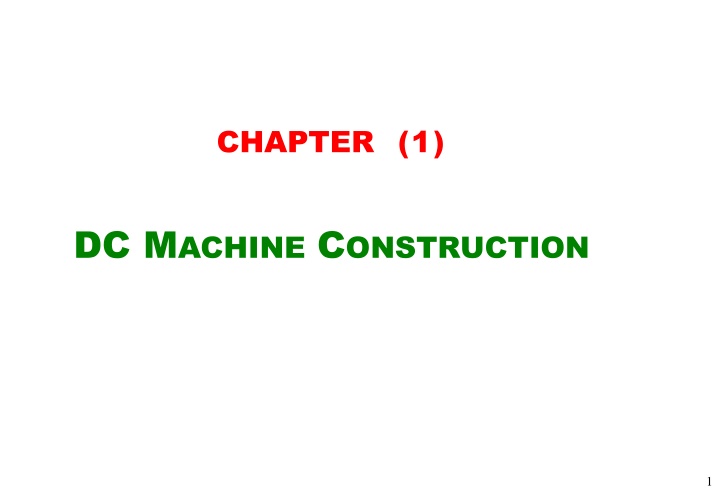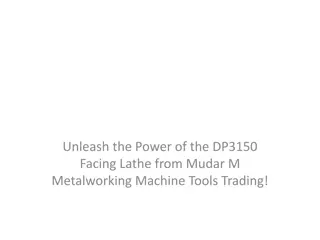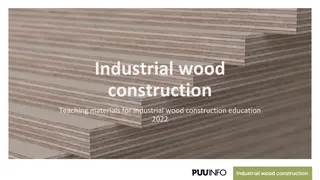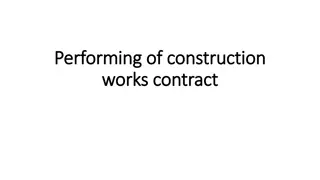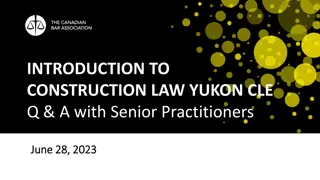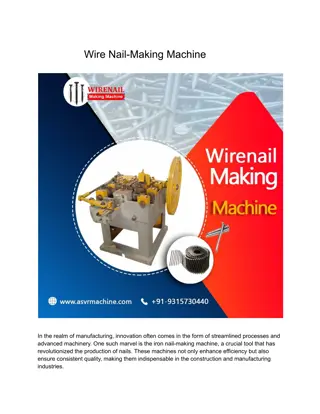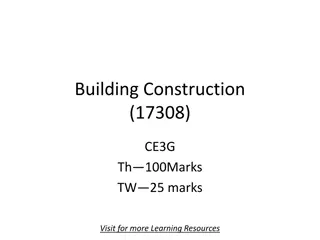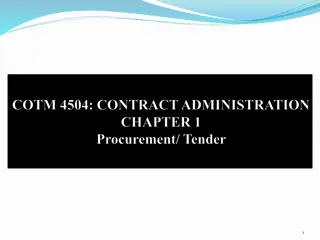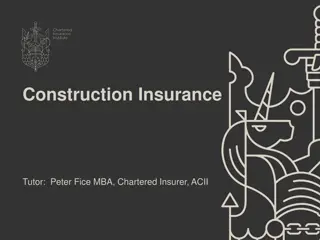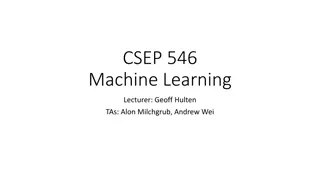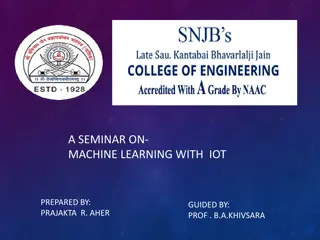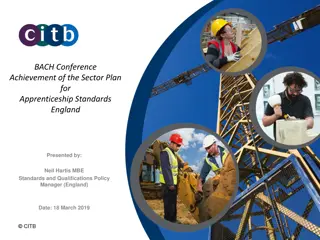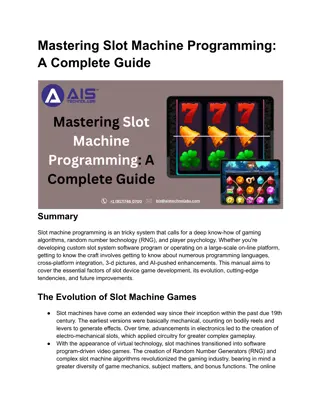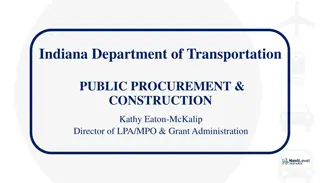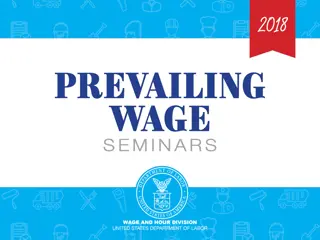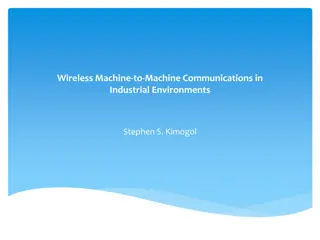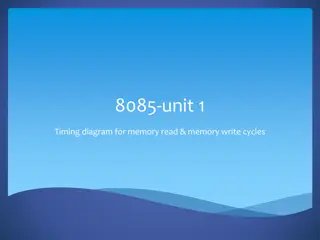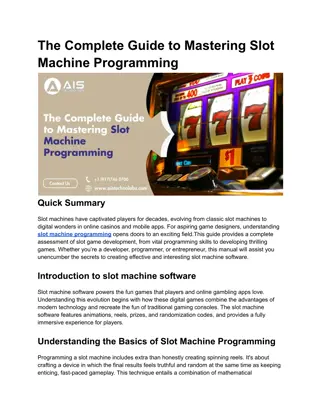Overview of DC Machine Construction
Classification of Electric Machines, overview of DC generators and motors, construction of DC machines with stator, rotor, field winding, shaft, poles, and main frame explained.
Download Presentation

Please find below an Image/Link to download the presentation.
The content on the website is provided AS IS for your information and personal use only. It may not be sold, licensed, or shared on other websites without obtaining consent from the author.If you encounter any issues during the download, it is possible that the publisher has removed the file from their server.
You are allowed to download the files provided on this website for personal or commercial use, subject to the condition that they are used lawfully. All files are the property of their respective owners.
The content on the website is provided AS IS for your information and personal use only. It may not be sold, licensed, or shared on other websites without obtaining consent from the author.
E N D
Presentation Transcript
CHAPTER (1) DC MACHINE CONSTRUCTION 1
OVERVIEW OF ELECTRIC MACHINES Classification of Electric Machines: Electric Machines Static Machines Transforms Rotating Machines Motors & Generators Direct Current (DC) Alternating Current (AC) Single-Phase Three-Phase Synchronous Induction Separately Excited Self Excited Single-Phase Three-Phase Series Compound Shunt 2
OVERVIEW OF DIRECT CURRENT MACHINES Mechanical Energy o Direct-Current (DC) machines are divided into (1) DC Generators and (2) DC Motors o The construction of dc motors and dc generators are similar. Every generator can operate as a motor and viceversa. Energy Conversion DC Machine DC GENERATOR is a machine that converts mechanical energy intoelectrical Motor r Generato energy (dc voltage and current) DC MOTOR is a machine that converts electrical energy intomechanical energy by supplying a dc power (dc voltage and current) Electrical Energy 3
OVERVIEW OF DIRECT CURRENT MACHINES o DC generators are not as common as they used to be, because direct current, when required, is mainly produced by electronic rectifiers from an AC source. o While dc motors are widely used in many applications. Almost every mechanical movement that you see around you is caused by an DC (direct current) motor, due to its high torque production and thesimplicity of speed control of the motorrotation. o However, DC machines are complex construction and high maintenance have reduced their use. 4
DC MACHINE CONSTRUCTION DC Machine Two Major Parts: - Stator (Field): is the stationary part of the dcmachine. - Rotor (Armature): is the rotating part of the dcmachine. Stator Rotor 5
DC MACHINE CONSTRUCTION Field winding Field winding Shaft North Pole South Pole Commutator Segments Two-pole generator illustrating commutation. 6
DC MACHINE CONSTRUCTION -MAIN FRAME (STATOR) o The armature shaft is mounted in bearings on bothends. o The bearings are mounted in circular plates called end bellsat opposite ends of the machine. o The end belts fit into a cylindrical steel alloy structure called the main frame. o The main frame supports the end bells, armature, brushes, and fieldpoles. o The main frame provides a low reluctance path for the magnetic flux outside the armature (thickstructure). End Bell Main Frame 7
DC MACHINE CONSTRUCTION - ARMATURE (ROTOR) o More loops of wire (coils) = higher rectifiedvoltage. o In practical, loops are generally placed in slots of an ironcore. o The iron acts as a magnetic conductor by providing a low-reluctancepath for magnetic lines of flux to increase the inductance of the loops and provide a higher induced voltage. o The commutator is connected to the slotted ironcore. o The entire assembly of 1) coils, 2) iron core, and 3) commutatoris called the armature. o The armature is made up of a shaft on which a core of laminated disks is mounted. 8
DC MACHINE CONSTRUCTION - COMMUTATOR o Commutator segment: is the place at which the interconnectionof armature coils is made. o Commutator segments: are conducting stripes placed axially on the shaft of the armature. o Commutator segments: are electrically insulated from each otherand from any other metal parts of thearmature. o Commutator segments where the armature makes contact withthe outside world. Current is either taken from the rotating coil(generator) or received by the rotating coil (motor)through the commutator. 9
DC MACHINE CONSTRUCTION - BRUSHES o Brushes are necessary for commutation. o They must be good conductors, long wearing, relatively soft compared to the copper commutating segments against which theyare constantly rubbing. o Types of brushes are: carbon, graphite, mixture of carbon andcopper. o The brushes are held in place and kept in contact with thecommutator segments by brush rigging. o The rigging is mounted on but electrically insulated from the machine housing. o The rigging is a spring that forces thebrush against the commutator segments to ensure good electrical contact. 10
DC MACHINE CONSTRUCTION - FIELD WINDINGS (FIELD POLES) o North and south poles of the DC machine. o In small machines, field poles are created by a permanentmagnet. o A permanent magnet is a ferromagnetic material that has been magnetized initially by an external source. This material remains magnetized due to hysteresis after the removal of the externalsource. o The strength of a permanent magnet depends on the strength of the excitation that magnetizes it and the type of material of which it ismade (Alnico) (an alloy consisting of aluminum, nickel, cobalt, copper, and iron). 11
DC MACHINE CONSTRUCTION - FIELD WINDINGS (FIELD POLES) Electromagnets (to produce field poles) o The strength of an electromagnet, although dependent on the size and type of material used, can be easily controlled by the number of turns of wire making up the coil and the amount of current in thecoil. o A source of electricity is needed to maintain the current in thecoil. o Types of field windings: 1. Series Field: Large current flows through few turns of thick wire, therefore ithas a very low resistance. 2. Shunt Field: Small current flows through many turns of thin wire,therefore it has much higher resistance the series field winding. 12
DC MACHINE CONSTRUCTION - FIELD WINDINGS (FIELD POLES) 3. Series and Shunt field windings o When a DC machine uses both series and shunt fields, eachpole piece will contain bothwindings. o The windings are wound on the pole pieces in such a manner that when current flows through the winding it will producealternate magnetic polarities. S series field F shunt field Both series and shunt field windingsare contained in each polepiece 13
DC MACHINE CONSTRUCTION - ARMATURE REACTION o In a DC machine, two kinds of magnetic fluxes are present: 1) main field flux and 2) armature flux . o If no load is connected to the terminals of the machine there willbe no current flow in the armature (rotor) windings, then the onlymagnetic field is coming from the machine's poles (main fieldflux). o If a load is connected to the terminals of the machine a current will flow in the armature (rotor) windings, which it will produce a magnetic field of its own (armature flux) and will distort the original magnetic fieldfrom the machine's poles. o This distortion of the flux in a machine as the load is increased is called Armature Reaction, and causes two main problems in DC machines: 1) flux weakening and 2) neutral-plane shift. 14
DC MACHINE CONSTRUCTION - ARMATURE REACTION Since the brushes are shifted, when commutation takes place, sparking will occur. 15
DC MACHINE CONSTRUCTION - ARMATURE REACTION Solution # 1) Inter-Poles: o Inter-poles are magnetic poles introduced between each of the mainfield poles in order to reduce armaturereaction. o They are wired so that their polarity opposes the armature currentflux. o They are wired in series with armature winding. o As the armature current flux increases due to a rise in armature current, the inter-pole flux increases proportionately. o Total armature resistance is the sum of the inter-pole resistance and the armature winding resistance. 16
DC MACHINE CONSTRUCTION - ARMATURE REACTION Solution # 2) Compensating windings: o Compensating windings are set in the pole faces of the main fieldpoles. o Their conductors run parallel to the armatureconductors. o They are wired in series with the armature winding so that an increasein armature current causes an increasein compensating winding flux as well as the armature winding flux. The connection is in such away thatthe two fields oppose each other and effectively cancel each other out. Armature current flux Compensating windingflux o The total armature resistance is thesum of the compensating winding resistanceand the armature winding resistance. o Position of compensating winding 17
DC MACHINE CONSTRUCTION - ARMATURE REACTION Solution # 3) Compensating windings and Inter-Poles: o Additional inter-poles are provided in between the main poles in large machines to get rid of the commutation problem arising out ofarmature reaction. Armature current flux Compensating windingflux Inter-pole & compensating coil connection Position of compensating and inter-pole windings 18
